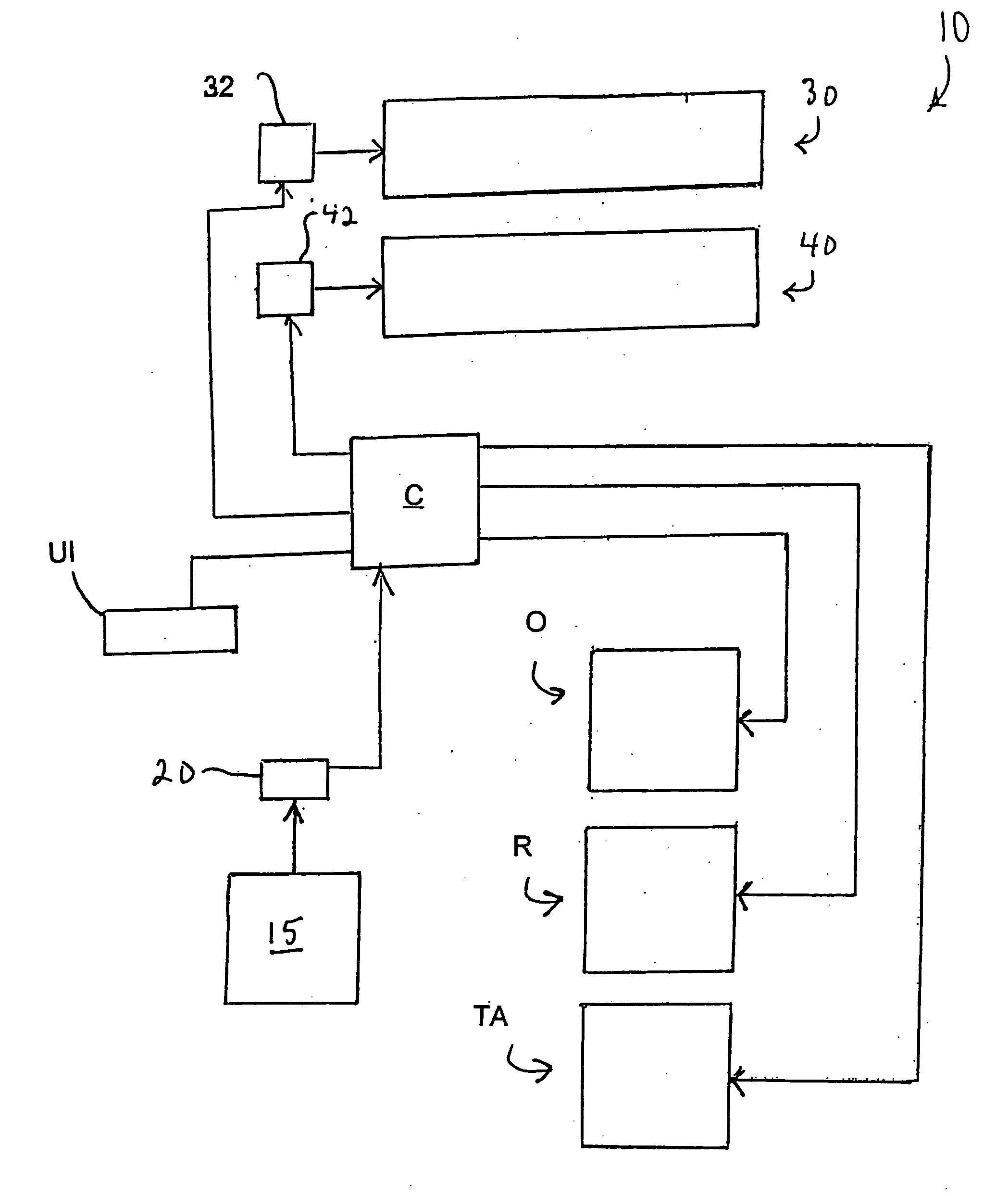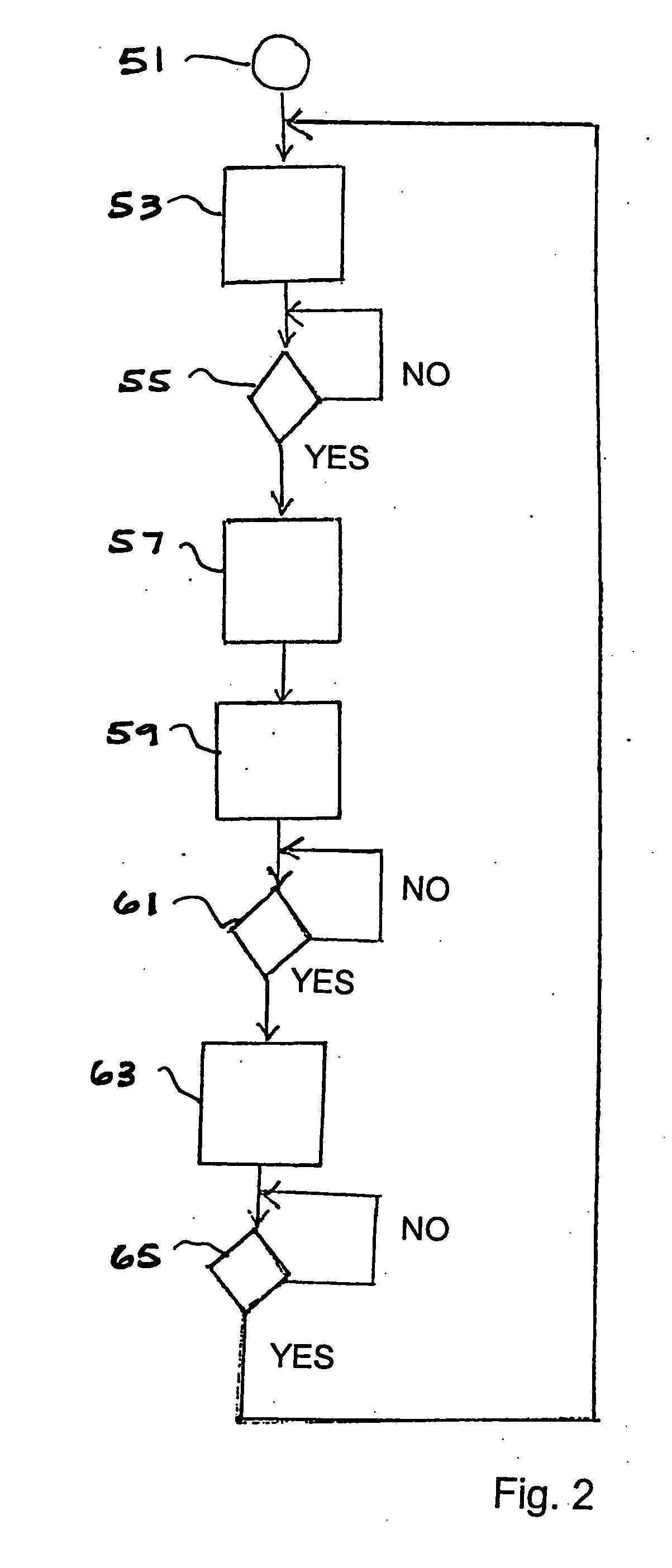Inserting apparatus and method with controlled, master cycle speed-dependent actuator operations
a master cycle speed and actuator technology, applied in the direction of digital computer details, instruments, packaged goods types, etc., can solve the problem that machines are not capable of operating at different cycle speeds, and achieve the effect of maintaining synchronization and constant time lag
- Summary
- Abstract
- Description
- Claims
- Application Information
AI Technical Summary
Benefits of technology
Problems solved by technology
Method used
Image
Examples
Embodiment Construction
[0035] Referring now to FIG. 1, an inserting apparatus or system, generally designated 10, is schematically illustrated. Inserting apparatus includes a master drive assembly 15 that typically drives a primary function such as the transport of inserts downstream to one or more assemblies associated with insertion apparatus 10. Master drive assembly 15 includes a rotating component (not specifically shown), such as a motor-driven drive shaft, which might be mechanically linked to other rotating components as understood by persons skilled in the art. An encoder 20 or similar device interfaces with the rotating component of master drive assembly 15. Encoder 20 measures the rate at which master drive assembly 15 is physically rotating (i.e., the master cycle speed) in encoder pulses per second, and converts this measurement into an electrical output signal. The encoder signal is read and interpreted by a motion controller C, which includes an I / O interface, signal conditioning and amplif...
PUM
| Property | Measurement | Unit |
|---|---|---|
| time | aaaaa | aaaaa |
| dwell time | aaaaa | aaaaa |
| dwell time | aaaaa | aaaaa |
Abstract
Description
Claims
Application Information
 Login to View More
Login to View More - R&D
- Intellectual Property
- Life Sciences
- Materials
- Tech Scout
- Unparalleled Data Quality
- Higher Quality Content
- 60% Fewer Hallucinations
Browse by: Latest US Patents, China's latest patents, Technical Efficacy Thesaurus, Application Domain, Technology Topic, Popular Technical Reports.
© 2025 PatSnap. All rights reserved.Legal|Privacy policy|Modern Slavery Act Transparency Statement|Sitemap|About US| Contact US: help@patsnap.com



